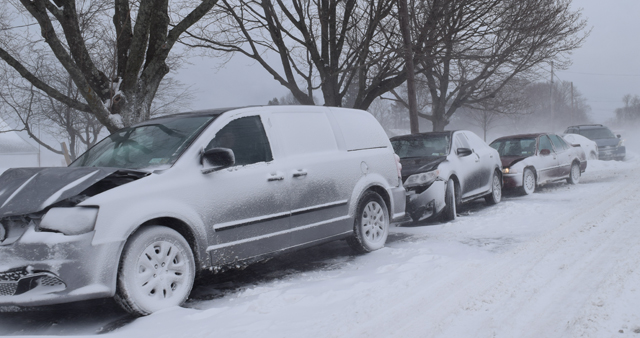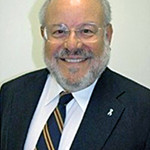Grossman: A paramedic’s crusade against tailgating

Ben Jones has for decades been on a crusade to get action on tailgating.
Mr. Jones, a paramedic on Shelter Island — and at 92 the oldest paramedic in New York State and probably in the U.S.— notes that according to the National Highway Traffic Safety Administration “a stunning 40 percent of all motor vehicle accidents are caused by rear-ending the vehicle in front or swerving and skidding suddenly from side to side to avoid doing so.”
Early on as a paramedic, Mr. Jones became aware of this major traffic safety issue.
“I would see these accidents routinely,” he said. He recalls vividly “one guy in the ambulance on the way to the hospital saying, ‘That SOB in front of me slammed on the brakes. I didn’t have a chance. I ran right into him.’”
The key problem, says Mr. Jones, is that virtually all motorists in the United States have been, and continue to be, incorrectly taught about the distance they should be driving behind the vehicle in front of them.
They are told that they should be able to stop in two or three seconds.
Mr. Jones presents the New York State Department of Motor Vehicles Driver’s Manual as an example. There, on Page 72 — “only one half-page of the handbook is devoted to tailgating,” he complains — are the instructions: “For a good ‘space cushion’ use the two-second rule,” the manual says. “Choose an object near or above the road ahead, such as a sign, tree or over-pass. As the vehicle ahead passes it, count aloud, slowly, ‘one thousand one, two thousand two.’ If you reach the same object before you finish counting, you are following too closely.”
But this doesn’t match the “defensive driving strategy to avoid tailgating” as developed by the National Safety Council and used in the training of emergency vehicle operators and people applying for commercial driver licenses, who together account for only 4-percent of drivers on our roadways.
They’re instructed that it takes three-quarters of a second to a full second for “an alert, focused, non-distracted operator to realize that real danger exists and corrective action is” necessary. Then it takes another three quarters to a full second for a driver to move his or her foot from the accelerator and begin depressing the brake according to the NSC. Then, there’s the “mechanical” process — taking “three to four seconds for the brakes to engage and bring that vehicle to a safe stop in the same lane of traffic.” And this is for a passenger car “with good brakes and tires on a dry roadway with good visibility.” For a heavier vehicle and with poor visibility or on wet roads, “even more seconds must be added to the following distance.”
At the least, stresses Mr. Jones, this totals “five full seconds. Never, ever less.”
A “major complication” of the situation, Mr. Jones said, “relates to the practice by auto insurance companies to give sizeable premium reductions to their customers simply for taking listed state-approved safe driving training courses.”
That’s because organizations providing such courses “must base their curriculum on material contained in that specifi c state’s offi cial driver’s manual,” he added. “If that state document recommends two or three seconds … then that will be the following distance that is taught.”
For generations, Mr. Jones said, drivers “have not been informed about the deadly consequences of tailgating and the compelling reasons why establishing a realistic safety space is imperative.”
He also believes the “two second rule” is supported by engineers, government bureaucrats and others to maximize the capacity of limited-access highways.
What’s to be done?
“There are educational, attitudinal and structural problems that must be addressed,” Mr. Jones said.
Among these is eliminating the “deeply imbedded belief that the closer we drive to the vehicle ahead, the quicker we will get to where we are going.” Then there’s the public ignorance that needs to be met with recognition of the realities of tailgating. “Most drivers will address these issues and adjust their attitude and behavior when presented with all the hard, cold facts,” Mr. Jones said.
Motor vehicle departments across the U.S. must highlight the problem. They must “clearly identify tailgating as an irresponsible, dangerous driving behavior through road signs, PSAs, editorials, safe driving articles and declarations by public safety officials,” Mr. Jones said.
It should be a campaign shouted from the rooftops and given the kind of attention directed against such highway safety issues as impaired driving, speeding and using cell phones to text or talk while driving.
 Karl Grossman’s syndicated “Suffolk Closeup” column is printed in the Shelter Island Reporter, a Times/Review Newsgroup publication.
Karl Grossman’s syndicated “Suffolk Closeup” column is printed in the Shelter Island Reporter, a Times/Review Newsgroup publication.


